Many
Electron
atoms
-
part 3
Deriving the Hartree-Fock equations - using a "variational formulation"
This is based on "How to obtain the Schrödinger equation from
variational procedure"
First a short illustration/review of Lagrange equations - how are they
related to Newton equations
and that they appear from minimalization of the action integral.
In the last part of the slide we start to talk about the "functional"
which could be used
for obtaining the Schrödinger equation
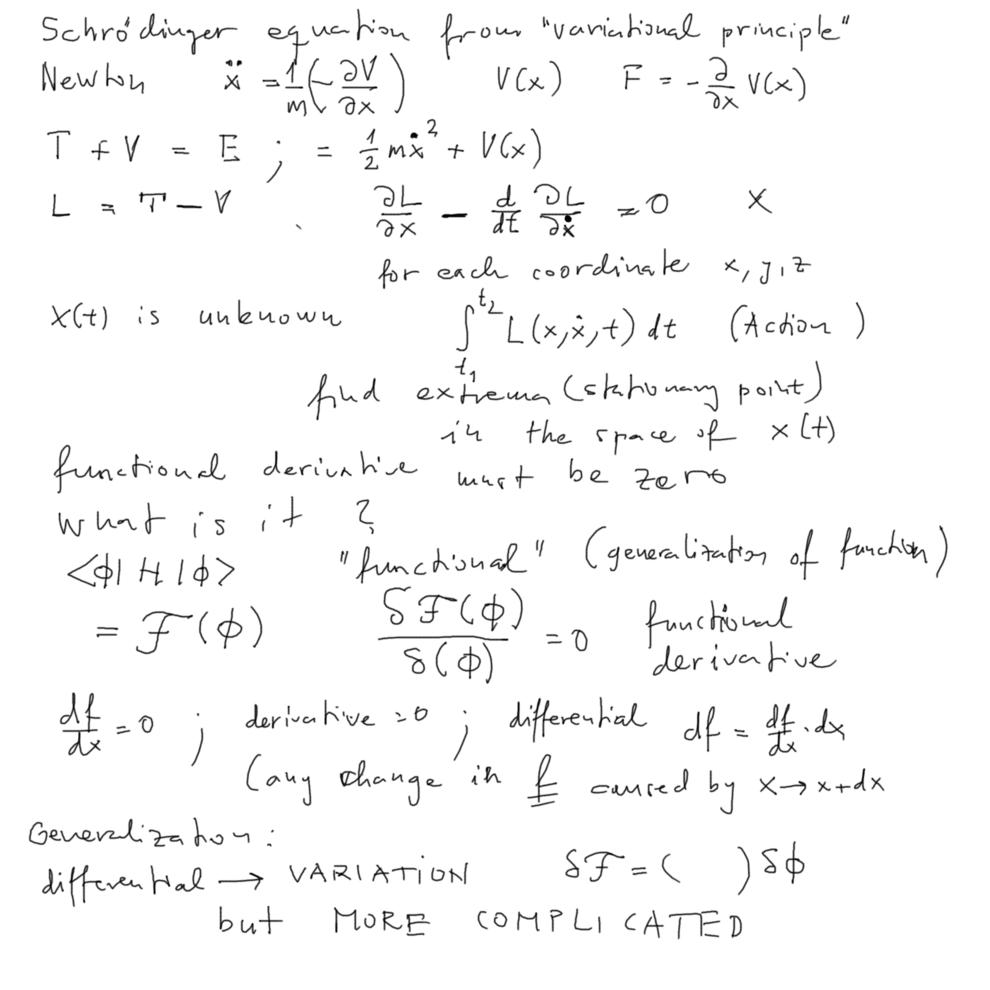 xcf_001.png
xcf_001.png
In the last part above - generalization of the differential (dx) is the
variation ( delta F )
Funtionals can appear in the form of integrals (very often)
Functions are mappings of a set of numbers to set of numbers
functions of 3 variables are mappings of a set of vectors (in 3-d) to a
set of numbers .... etc
Functionals are mappings of set of functions to set of
numbers - and that can include for example integration
(the mapping must associate a number with a function - then the
integration is a good "example" - and most useful
for physics)
Towards the end of this slide - technically - how do we find the
functional derivative - in these type
of functionals simply by symbolically partial derivation of the
integrand with respect
to the function in question
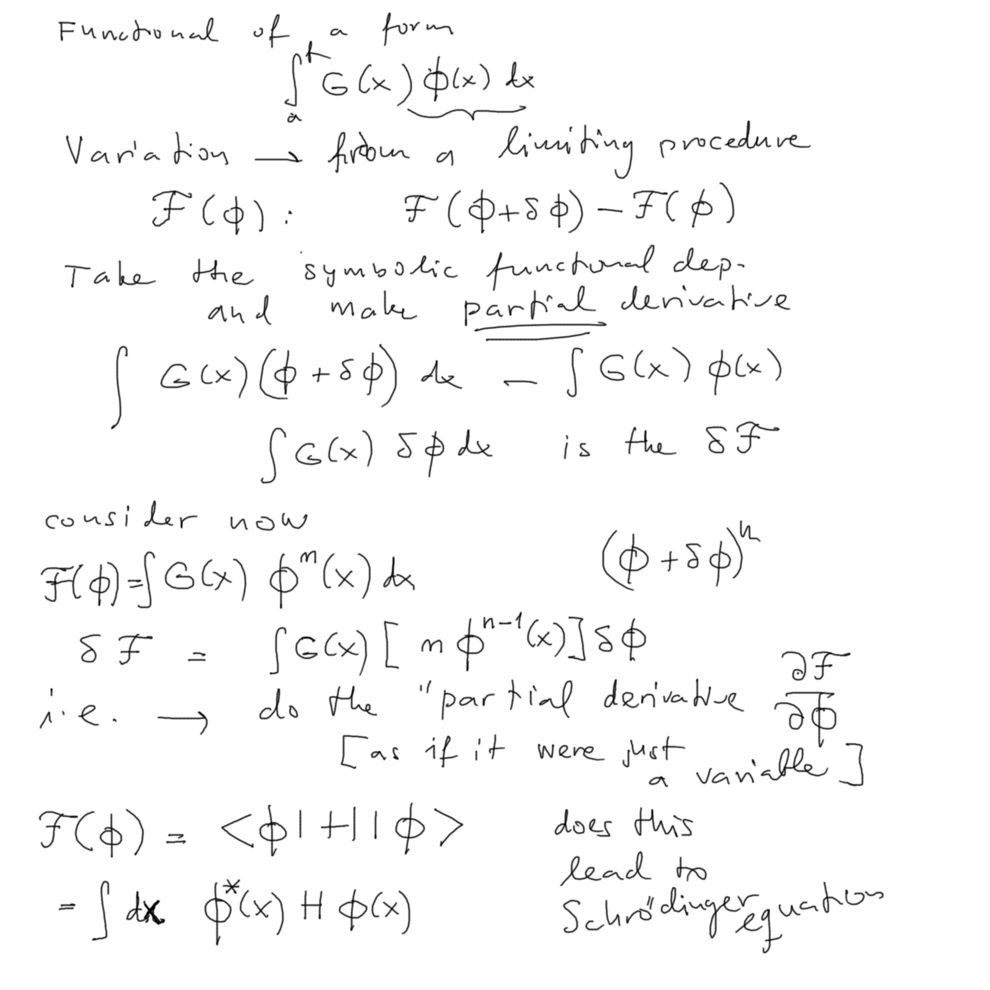 xcf_002.png
xcf_002.png
Towards the end of this slide - technically - how do we find the
functional derivative - in these type
of functionals simply by symbolically partial derivation of the
integrand with respect
to the function in question
In the last part - so how to choose the "Functional" to get to the
Schrödinger equation?
In this slide we investigate this"guess". We find that it would lead to
a very strange equation, requiring that
the function Phi is idetically zero.
(on the way we mention that Phi is in principle complex, so that there
is the Re and Im, i.e. two components,
two variables. Instead of Re and Im we can take the other two
variables, Phi and Phi* which are
linear combinations of Re and Im ..... and finally we can
just take the variation of Phi* - but
that is just cosmetics to get it out nicer
So in the middle of the slide we "reveal the solution" - it must be
looking for a minimum
with a constraint.
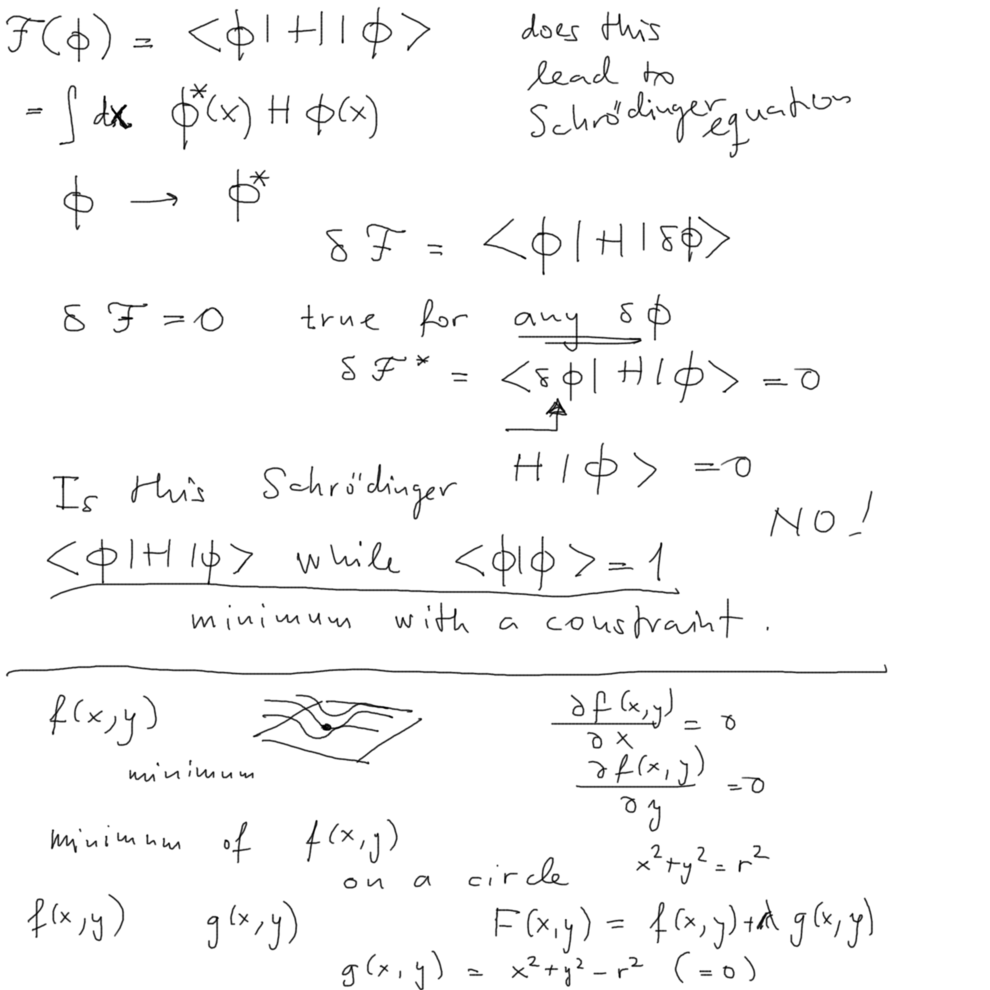 xcf_003.png
xcf_003.png
Minimum of a function with a constraint:
Find a minimum of function F(x,y) on a curve g(x,y)=0
Minimum of a function with a constraint: - Lagrange multiplier
http://en.wikipedia.org/wiki/Lagrange_multiplier
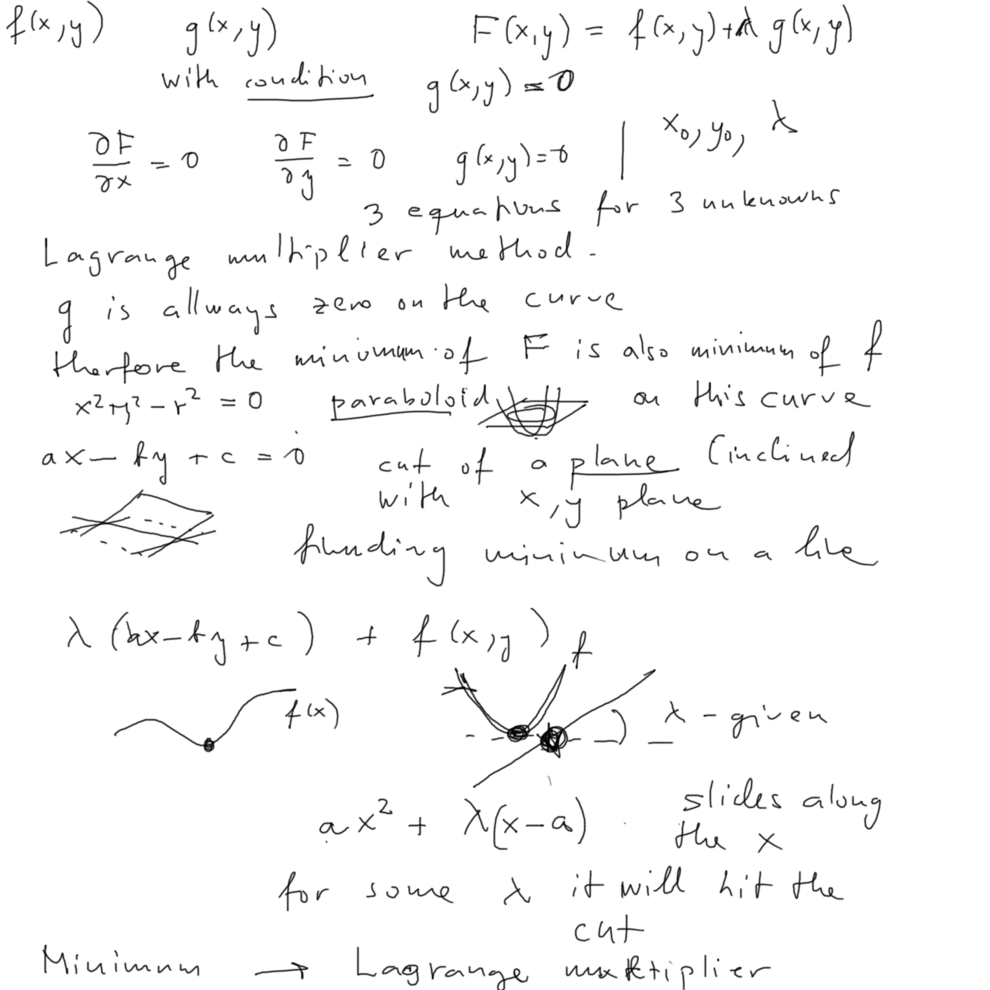 xcf_004.png
xcf_004.png
Lagrange multiplier - function of two varaibles - finding minimum gives
two equations - the two partial derivatives must be each zero.
WIth the constraint - we add one more equation for the lambda. And the
constraint assures that on the curve the g(x,y) is zero, so that the
minimum of the original funcion and the "new function" containing
lambda have the same values
Towards the end of the slide: case when the "curve" is a line - i.e.
the line equation is an intersecting plane.
The lagrange multiplier then means adding the plane with vrying
inclination. If the original function would look like a parabola,
then the parabola slides along the plane as we change its inclination -
until for the right lambda it falls on the intersection point.
This is a possible illustration of the Lagrange multiplier.
In the optimalization problem the
value of lambda is of no particular interest.
BUT for the Schrödinger equation
it has the meaning of the ENERGY, i.e. it is an important part.
So now back to our problem - our constraint is that the Phi is
normalized to one, i.e. it cannot "slide" to the unwanted
solution that the Phi is identically zero
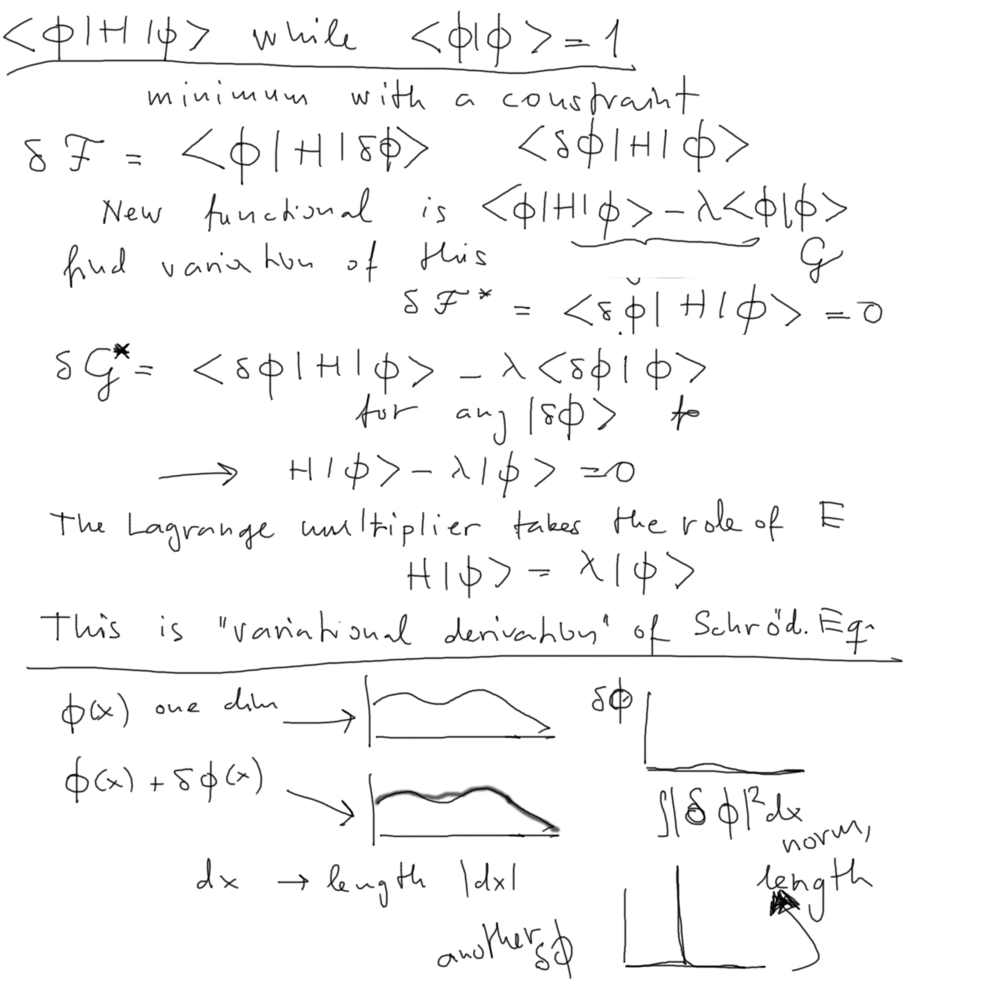 xcf_005.png
xcf_005.png
At the end we revisit the illustration what is the "generalized
differential", i.e. the variation
of a function - and the generalization of the "length" or norm.
Now we finally return to our problem:
Minimizing the functional of all the orbitals, the functional being the
total energy of the N-particles
described by a Slater determinant built from the N orbitals
We use the notation where the orbials are "described" by kets denoted
by the indices only
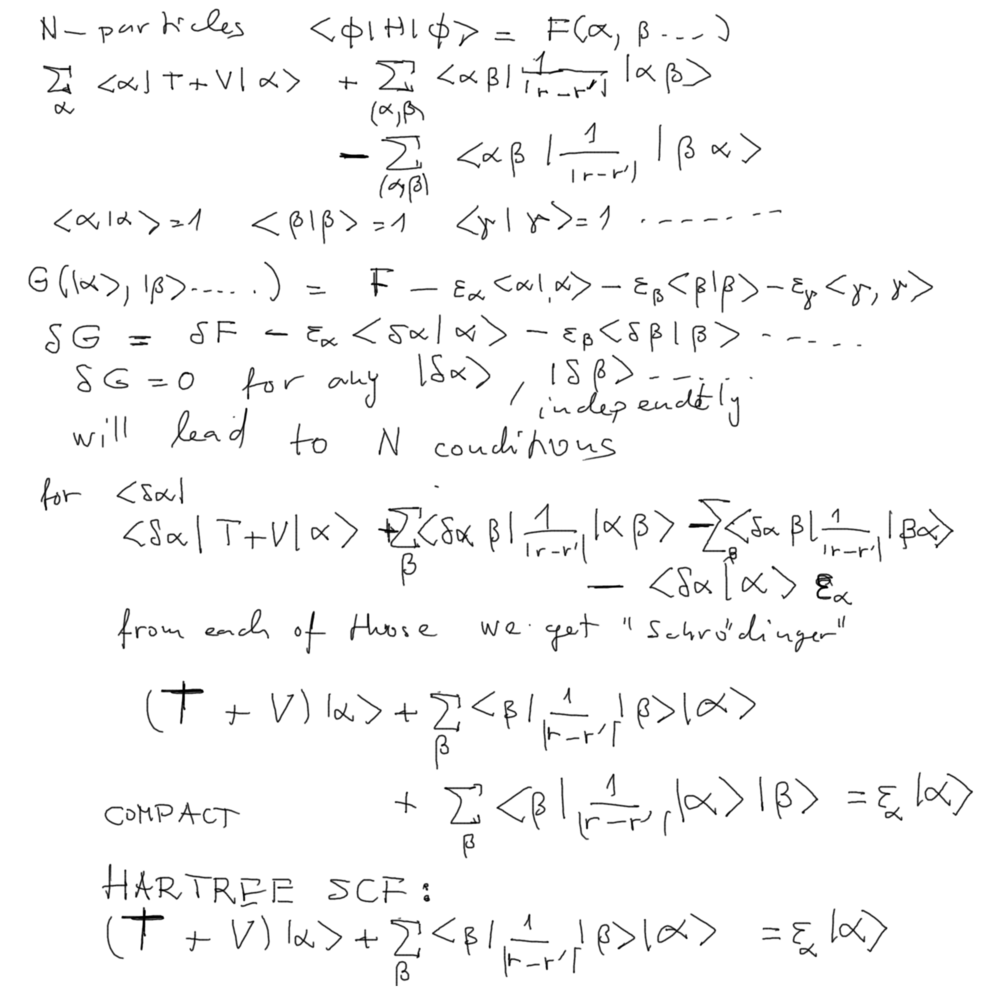 xcf_006.png
xcf_006.png
By the minimalization we obtain N equations which look like
Schrödinger equations for N orbitals
But there is a strange term arising from the exchange terms - we shall
see it below in the normal wavefunction form.
( We note that leaving out the exchange terms leads to the expression
very close to the Hartree SCF-definition equation )
Note: observe how the formulation runs
The "functional with constraints" - there is one such functional,
containing all the constraints with each multiplied
by its Lagrange multiplier.
The variation of this functional is also one object, containing the N
variations of the N orbitals.
Since these N variations are independent - it gives N independent
conditions shown above.
Here we write out in the
wave-function form the formal compact notation
of the previous slide
 xcf_007.png
xcf_007.png
These equations are known as Hartree-Fock equations.
Integral equations
Non-local potential originating from the exchange
 xcf_001.png
xcf_001.png
 xcf_002.png
xcf_002.png
 xcf_003.png
xcf_003.png
 xcf_004.png
xcf_004.png
 xcf_005.png
xcf_005.png
 xcf_006.png
xcf_006.png
 xcf_007.png
xcf_007.png